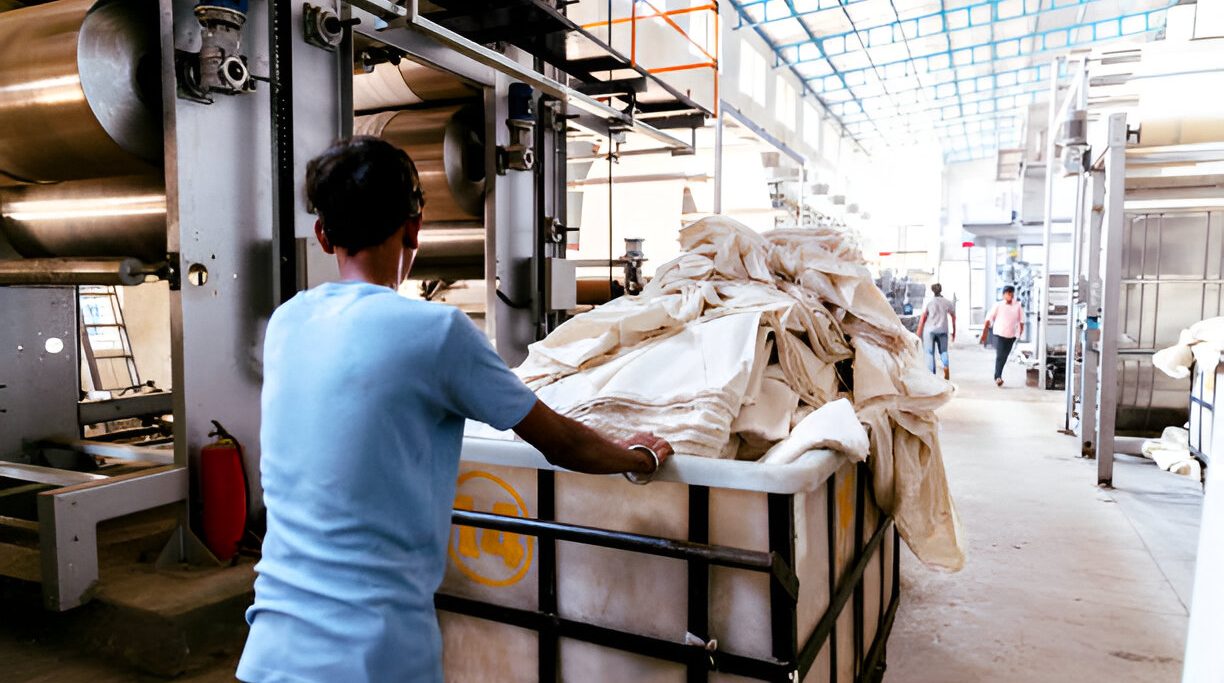When it comes to choosing the perfect fabric for cozy, comfortable clothing, French Terry and Fleece are two popular options. Both fabrics offer unique benefits and are widely used in casual and activewear. Understanding the differences between these two materials can help you make an informed decision based on your specific needs and preferences. Let’s dive into the key characteristics, advantages, and common uses between French Terry vs Fleece.
What is French Terry?
French Terry is a type of knit fabric characterized by its soft, looped texture on the inside and a smooth, soft surface on the outside. Typically made from cotton or a cotton blend, French Terry is known for its comfort and breathability.
Read more about French Terry here
Key Characteristics of French Terry:
Softness: Smooth outer surface and looped interior provide a cozy, plush feel.
Breathability: Allows air to circulate, preventing overheating.
Moisture-Wicking: Draws sweat away from the skin, keeping you dry.
Moderate Warmth: Provides warmth without excessive bulk.
Stretch: Offers flexibility and freedom of movement.
What is Fleece?
Fleece is a synthetic fabric, often made from polyester, designed to mimic the insulating properties of wool. It is known for its soft, fuzzy texture and excellent warmth.
Key Characteristics of Fleece:
Softness: Plush, fuzzy surface that feels soft against the skin.
Excellent Insulation: Traps heat effectively, making it very warm.
Lightweight: Despite its warmth, fleece is lightweight and comfortable.
Moisture-Wicking: Manages moisture well, keeping you dry during activities.
Quick-Drying: Dries quickly, making it suitable for outdoor wear.
Read about Winter Fabrics for Kids here
French Terry vs. Fleece: Comparison
1. Warmth:
French Terry: Provides moderate warmth, suitable for mild to cool weather. It’s ideal for layering and can be worn comfortably indoors.
Fleece: Offers superior insulation and is best for colder weather. It is often used in jackets and outerwear designed for winter.
2. Breathability:
French Terry: Highly breathable, allowing for better air circulation. It prevents overheating, making it suitable for activewear and all-day wear.
Fleece: Less breathable compared to French Terry. While it wicks moisture away, it can feel warmer and less airy.
3. Texture and Feel:
French Terry: Smooth on the outside with a looped, soft interior. It has a lighter feel and is less bulky.
Fleece: Fuzzy and plush on both sides, providing a snug, warm feel. It tends to be thicker and more insulating.
4. Versatility:
French Terry: Versatile for various garments, including sweatshirts, hoodies, joggers, and casual dresses. Suitable for layering.
Fleece: Commonly used for jackets, vests, blankets, and heavy-duty outdoor gear. It’s excellent for standalone warmth.
5. Care and Durability:
French Terry: Easy to care for, usually machine washable. It maintains its shape and softness over time.
Fleece: Also easy to care for and quick-drying. However, it can pill over time, especially with frequent washing.
Common Uses
French Terry:
Sweatshirts and Hoodies: Perfect for layering and casual wear.
Joggers and Sweatpants: Comfortable for lounging and light exercise.
Loungewear: Ideal for relaxing at home.
Casual Dresses and Tops: Stylish yet comfortable for everyday wear.
Fleece:
Jackets and Outerwear: Excellent for cold weather and outdoor activities.
Vests: Provides core warmth while allowing arm mobility.
Blankets and Throws: Cozy and warm for home use.
Outdoor Gear: Used in hiking and camping gear for its warmth and quick-drying properties.
Both French Terry and Fleece offer distinct advantages, making them suitable for different needs and preferences. French Terry is perfect for moderate warmth, breathability, and versatility in everyday casual wear. On the other hand, Fleece excels in providing superior insulation, lightweight warmth, and quick-drying properties, making it ideal for colder weather and outdoor activities.
Choosing between French Terry and Fleece ultimately depends on the intended use and your personal comfort preferences. Whether you’re looking for a cozy sweatshirt or a warm winter jacket, understanding the unique properties of these fabrics will help you make the best choice for your wardrobe.



